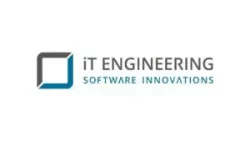Quality specifications are important criteria in production – they must be met and maintained for each workpiece and for each component. Manufacturing quality is decisively influenced by numerous factors, including production and process parameters, tool wear and environmental conditions. The dependencies and influences of these factors on quality are manifold and, especially in modern production processes, tracking them is on the verge of technological feasibility. Predictive Quality helps to predict the quality characteristics of manufactured parts through data analysis.
The challenge: Reducing manufacturing scrap
In order to guarantee high product quality requirements, it is unavoidable to carry out cost-intensive 100% inspections, even with great experience in manufacturing technology. Additional production costs are incurred due to scrap and rework.
In addition, it can be observed in industrial manufacturing that production is not always of the highest manufacturing quality and not with the greatest possible precision. The reasons for this are both economic and technical feasibility and available time that would have to be spent to find an optimal solution. But this contradicts the standard of the quality representatives. Their constant endeavor is naturally to have only good parts produced and to counteract any rejects.
However, when assembling very tightly toleranced components, it happens time and again that individual parts do not fit correctly even though all parameters are within the tolerance requirements. The reason for this is, for example, that one of the parts is manufactured at the upper tolerance limit and the other at the lower tolerance limit, thus maximizing the tolerances between the batches. In addition, environmental parameters such as e.g. temperature influences in the production hall have a negative effect, in that they have a different impact on different materials. When the parts are then assembled, stresses can develop and parts can fail more quickly than expected.
Based on these challenges, the central questions of the companies are: How can external influences or complex correlations between components be detected in time so that a reduction in quality can be prevented at the outset?
The solution: Collect - Explore - Improve
iT Engineering Software Innovations (iTE SI) develops software solutions – individually adapted for companies in the technical market environment, such as e.g. the mechanical engineering and manufacturing industries. With the so-called IIoT Building Blocks (Collect – Explore – Improve), the company delivers a software package for industrial data collection and data-based optimization. For iT Engineering Software Innovations, the IIoT forms the basis for the “networked production” of tomorrow and the data basis for any kind of optimization. But merely collecting and storing data does not add value. In order to extract useful information from them, they must first and foremost be prepared in a meaningful way.
With the IIoT Building Blocks, iTE SI developed a solution that supports all phases in generating added value from raw data from the shop floor quickly and easily in the industrial production environment. A variable concept of different building blocks of software and hardware components can solve a wide variety of challenges in the context of Industry 4.0.
An important basis for IIoT solutions is that both the tools and assembly stations as well as the workpieces and components to be manufactured are provided with uniquely assignable identification tags and networked via the IIoT. This is easily achieved even with heterogeneous systems with the help of the Data Collector.
As a complementary technology for communication with physical assets, for example, the use of RFID technology is suitable. The tools and all production parts can be clearly identified at any time via RFID readers or barcode scanners distributed throughout the plant. Recorded sensor data and acquired parameters can then be assigned to the workpieces via the overall system. These are, for example, performance data of robots or torques of electronic screwdriving tools at the assembly stations. All parameters and measurement data are thus linked to each other. The temporal synchronization of the different data is particularly important, because only then is comparability of the data ensured.
Based on this data, deployed IIoT software tools, such as the IIoT Building Blocks’ ‘Improve Blocks’, can uncover dependencies and detect anomalies, for example. By analyzing past data, it is possible to infer the expected effects when measured values change. With such a model, forecasts can be made and parameters can be adjusted or other measures taken even before a deterioration in quality occurs. It can also be used to make predictions about availability and production optimization, as well as to increase key measurement parameters in industrial production.
The result: Predictive Quality through IIoT Building Blocks
With the IIoT Building Blocks Data Collector and an RFID solution, a predictive quality system is implemented. This not only supports and partially automates the work in quality management, but also makes the resulting potential available throughout the company. In this way, the dependencies of even complex factors influencing production quality can be identified in advance and those responsible can take countermeasures in good time.





